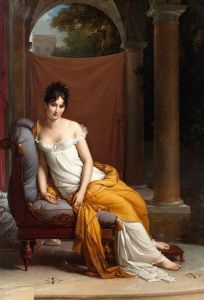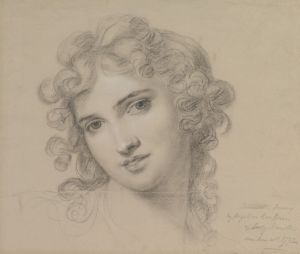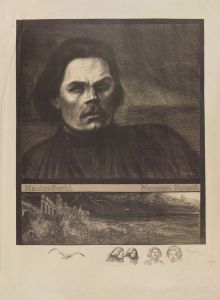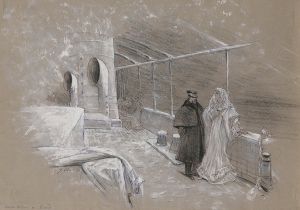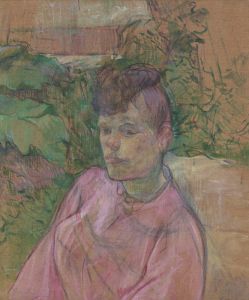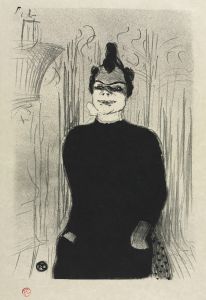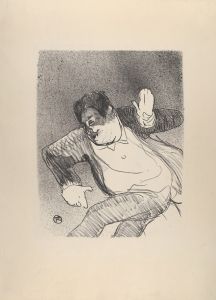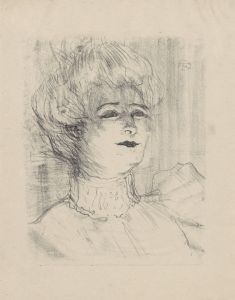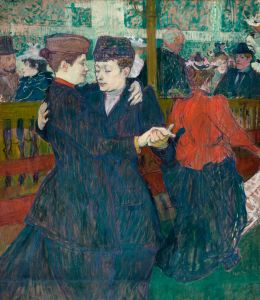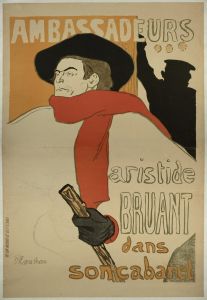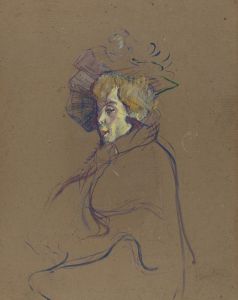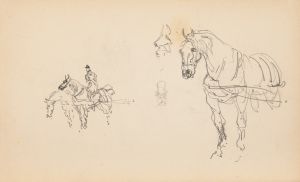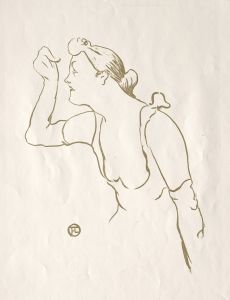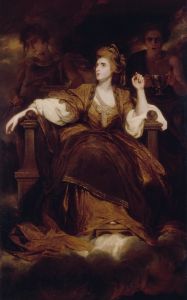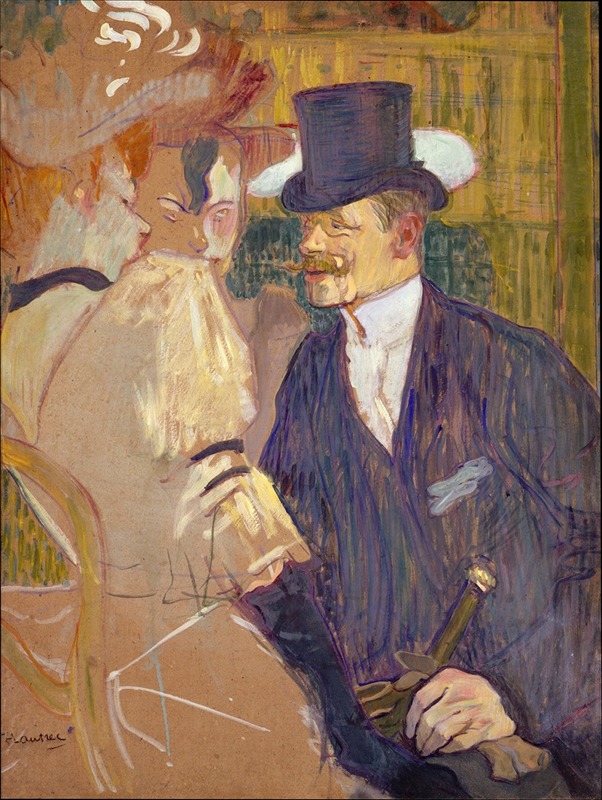
The Englishman at the Moulin Rouge
A hand-painted replica of Henri de Toulouse-Lautrec’s masterpiece The Englishman at the Moulin Rouge, meticulously crafted by professional artists to capture the true essence of the original. Each piece is created with museum-quality canvas and rare mineral pigments, carefully painted by experienced artists with delicate brushstrokes and rich, layered colors to perfectly recreate the texture of the original artwork. Unlike machine-printed reproductions, this hand-painted version brings the painting to life, infused with the artist’s emotions and skill in every stroke. Whether for personal collection or home decoration, it instantly elevates the artistic atmosphere of any space.
Henri de Toulouse-Lautrec, a prominent French painter, printmaker, and illustrator, created "The Englishman at the Moulin Rouge" in 1892. This artwork is a vivid example of Toulouse-Lautrec's fascination with the vibrant nightlife of Paris during the late 19th century, particularly the bohemian atmosphere of the Montmartre district. The painting captures the essence of the Moulin Rouge, a famous cabaret that opened in 1889 and quickly became a symbol of the era's lively entertainment scene.
Toulouse-Lautrec was known for his keen observational skills and ability to depict the nuances of Parisian nightlife. His works often featured the performers, patrons, and unique ambiance of venues like the Moulin Rouge. "The Englishman at the Moulin Rouge" is no exception, showcasing his talent for capturing the spirit of the time.
The painting portrays an Englishman, identifiable by his distinctive appearance, seated at a table in the bustling environment of the Moulin Rouge. The Englishman is depicted with a sense of detachment, observing the lively scene around him. This figure is believed to be William Warrener, an English artist and friend of Toulouse-Lautrec. Warrener's presence in the painting highlights the international allure of the Moulin Rouge, attracting visitors from various countries who were eager to experience its renowned performances and lively atmosphere.
Toulouse-Lautrec's use of bold colors and dynamic composition in this painting reflects the energy and excitement of the cabaret. The figures are rendered with expressive lines and vibrant hues, capturing the movement and vitality of the scene. The artist's technique of using lithography and poster art is evident in the flat areas of color and strong outlines, which became a hallmark of his style.
The Moulin Rouge itself was an iconic venue in Paris, known for its extravagant shows, can-can dancers, and eclectic clientele. It served as a gathering place for artists, writers, and bohemians, providing a rich source of inspiration for Toulouse-Lautrec. His frequent visits to the cabaret allowed him to observe and document the diverse characters and lively interactions that defined the nightlife of Montmartre.
"The Englishman at the Moulin Rouge" is part of Toulouse-Lautrec's broader body of work that captures the essence of Parisian society during the Belle Époque. His paintings and posters offer a glimpse into the world of entertainment and leisure that characterized the period, making him one of the most important chroniclers of his time.
Today, Toulouse-Lautrec's works, including "The Englishman at the Moulin Rouge," are celebrated for their innovative style and insightful portrayal of late 19th-century Parisian life. His ability to convey the atmosphere and characters of the Moulin Rouge continues to captivate audiences, offering a window into a bygone era of artistic and cultural vibrancy.





